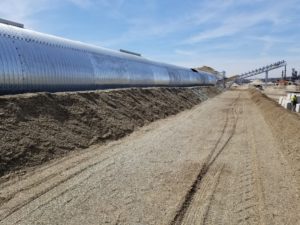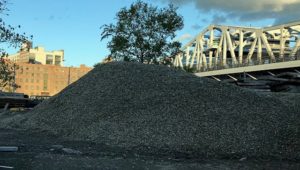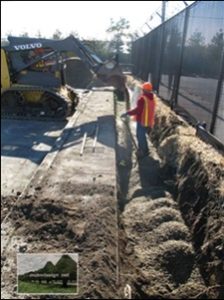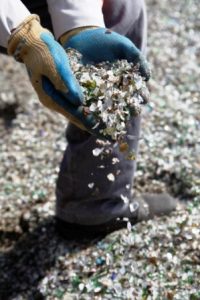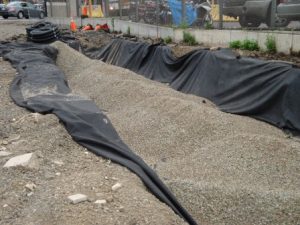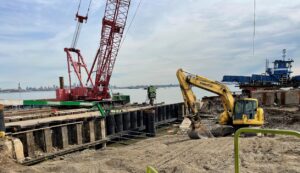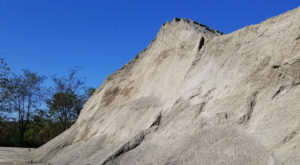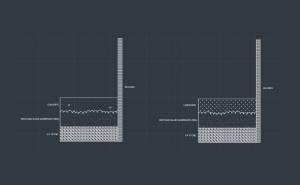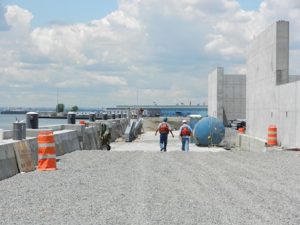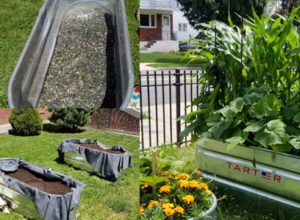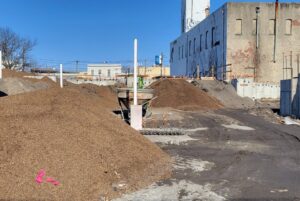
In winter 2023, SMR provided more than 1,600 tons of RGA to White Diamond Properties/Manhattan Building Company (MBC) for work at the Bates Street Redevelopment Area in Jersey City. The RGA was used for pipe backfill and general fill, and was approved by geotechnical engineers, JZN Engineering, and the LSRP, Prestige Environmental. When complete, the project will consist of mixed-use high-rise buildings to include residential housing, commercial space, and parking garages.
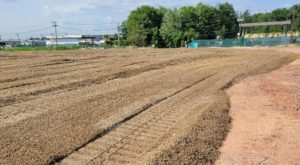
Throughout summer and fall 2022 and winter 2023, SMR supplied more than 72,000 tons of RGA to Hartz Mountain Industries for use in subbase for a new warehouse and distribution facility. SMR RGA meets the strict environmental parameters of the NJ Sports & Exposition Authority (NJSEA), the regional planning and zoning agency for the Hackensack Meadowlands District. While high water tables can be problematic with new construction projects, free draining RGA subbase can provide added protection from seasonal freeze thaw cycles and less settlement due to lightweight characteristics.

In spring, summer and fall 2021, SMR provided approximately 42,000 cubic yards of RGA to Morgan/Harbour Construction for use in development of the HRP Mercer Logistics Park. When complete, the Logistics Park will host more than 1.2 million SF of warehouse/distribution buildings within a larger industrial complex. SMR’s RGA was approved by the site geotechnical engineer and project LSRP Ransom Consulting. RGA was blended on-site in 1:2 and 1:3 ratios with quarry stone, providing significant savings to the project developer. The RGA blends were used as structural and clean fill below grade.
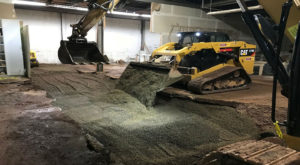
In spring 2021, SMR supplied Voyager Trucking with approximately 700 tons of RGA for the customer’s truck-stop site improvement project in Newark, NJ. The RGA was approved by the project LSRP and Engineer to use as clean backfill and sub-base, after removal of existing contaminated soils. The site will be developed to support a convenience store, fueling stations, truck parking, and other public facilities.

In spring 2019, SMR supplied 1,600 tons of RGA for use as structural fill aggregate. The RGA was used to improve and extend existing site soil materials. Unsuitable on-site materials that would otherwise be exported were blended with RGA to improve structural performance and support interior roads and parking lots. The project site includes luxury rental units and 240,000 SF of retail space. JMF Properties, RD Management, and Accurate Builders and Developers employed long-time RGA user, Union Paving & Construction, to perform the site work.
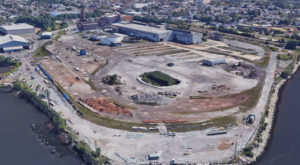
In July 2018, more than 3,000 tons of SMR RGA were approved and accepted for beneficial use at the Elm Street Distribution Center, a remediation project in Perth Amboy, NJ, by the LSRP of Record. In accordance with an NJDEP-approved remedial action work plan, RGA was used as general construction fill, and was blended with fill materials from other approved donor sites to manufacture a fill product that meets the geotechnical specification of the project. The product was used to construct an earthen protective cap and to raise the site grade above FEMA flood elevations.

In fall 2016, SMR provided approximately 200 tons of RGA to general contractor Centurion Companies, for use as compacted subsurface fill at the Ford dealership lot in Wayne, NJ.

In Spring 2017, SMR supplied approximately 850 tons of RGA to Grade Construction for a residential building site on the Jersey City waterfront. RGA, approved by the site’s LSRP, was blended with stone aggregate and used as sub-base for a planted area, in anticipation of future housing development.

In 2017, SMR supplied approximately 26,500 tons of RGA to the Tremley Point Coal Ash site in Linden, NJ. The site is subject to NJDEP remediation standards, and the RGA was tested and approved as clean fill by the site remediation professional. RGA was blended with other aggregates in a 2:1 ratio and compacted to a depth of approximately 2.5 feet to elevate the site for future warehouse construction and bulk storage.

From winter 2016 through summer 2017, approximately 6,000 tons of SMR RGA were approved and utilized by Iron Hill Construction as clean fill at a new residential development in Lyndhurst, NJ. RGA was blended with recycled concrete aggregate (RCA) produced from demolition of existing onsite structures, and used to raise site grades in future paved areas.

In spring and summer 2015, SMR RGA was approved for use as clean fill on the NJ Turnpike Interchange 14A Improvement Project. SMR and geotechnical engineers, SESI Consulting Engineers, implemented stockpiling and testing programs in accordance with the NJDEP Alternative & Clean Fill Guidance, to confirm suitability of SMR RGA as clean fill, both above and below the water table. Approximately 75,000 tons of SMR RGA have been approved and used in this ongoing project.

In spring and summer 2015, SMR RGA was used as clean fill for a Jersey City residential apartment complex. The project location is a “Site Remediation” site, subject to NJDEP Alternative Clean Fill guidelines. Approximately 5,300 tons of SMR RGA were tested and approved for use by the project’s LSRP (licensed site remediation professional).
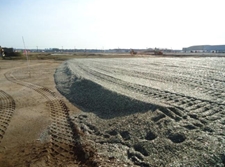
Teterboro Landing is a 63-acre mixed use development. Site-wide cleanup of this brownfield has been underway since 2007. In 2011, O’Brien & Gere, environmental engineers for the project, tested SMR’s RGA and approved its use for sub-base aggregate. SMR delivered 10,000 tons of RGA to the site, which was spread approximately 2 feet deep over 10 acres. Development plans for Teterboro Landing include retail, office, hotel and light industrial/flex space. All development is expected to meet sustainable design and development criteria, including LEED certification.

In 2014, more than 50,000 tons of SMR Recycled Glass Aggregate (RGA) were utilized as clean fill at ePort Redevelopment – a former 100+ acre brownfield that is being developed into an industrial warehousing facility. Environmental and geotechnical engineers, SESI Consulting Engineers, implemented a testing program in accordance with NJDEP Alternative & Clean Fill Guidance to approve the RGA as clean fill, for use both above and below the water table.
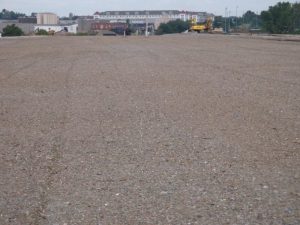
In 2013, SMR provided more than 40,000 tons of RGA to serve as a gas venting layer in the Avon landfill capping project. RGA was layered 6 inches deep as part of a 3.5 foot thick cap consisting of processed dredged material and top soil. The capped site will be used for a large solar energy installation.

In summer 2019, SMR supplied 22,000 tons of RGA to Accurate Builders and Coast Land Development for another phase in their Harbor View Marketplace development project — 240,000 SF of commercial/retail space, luxury rental units and parking. RGA was used as fill in a 2:1 ratio with recycled concrete aggregate (RCA). Materials were blended on-site and compacted in lifts to exceed the required compaction minimum of 95% Maximum Dry Density. Geotechnical performance was confirmed by Geo-Technology Associates.

In 2013, SMR provided more than 40,000 tons of RGA to serve as a gas venting layer in the Avon landfill capping project. RGA was layered 6 inches deep as part of a 3.5 foot thick cap consisting of processed dredged material and top soil. The capped site will be used for a large solar energy installation.



